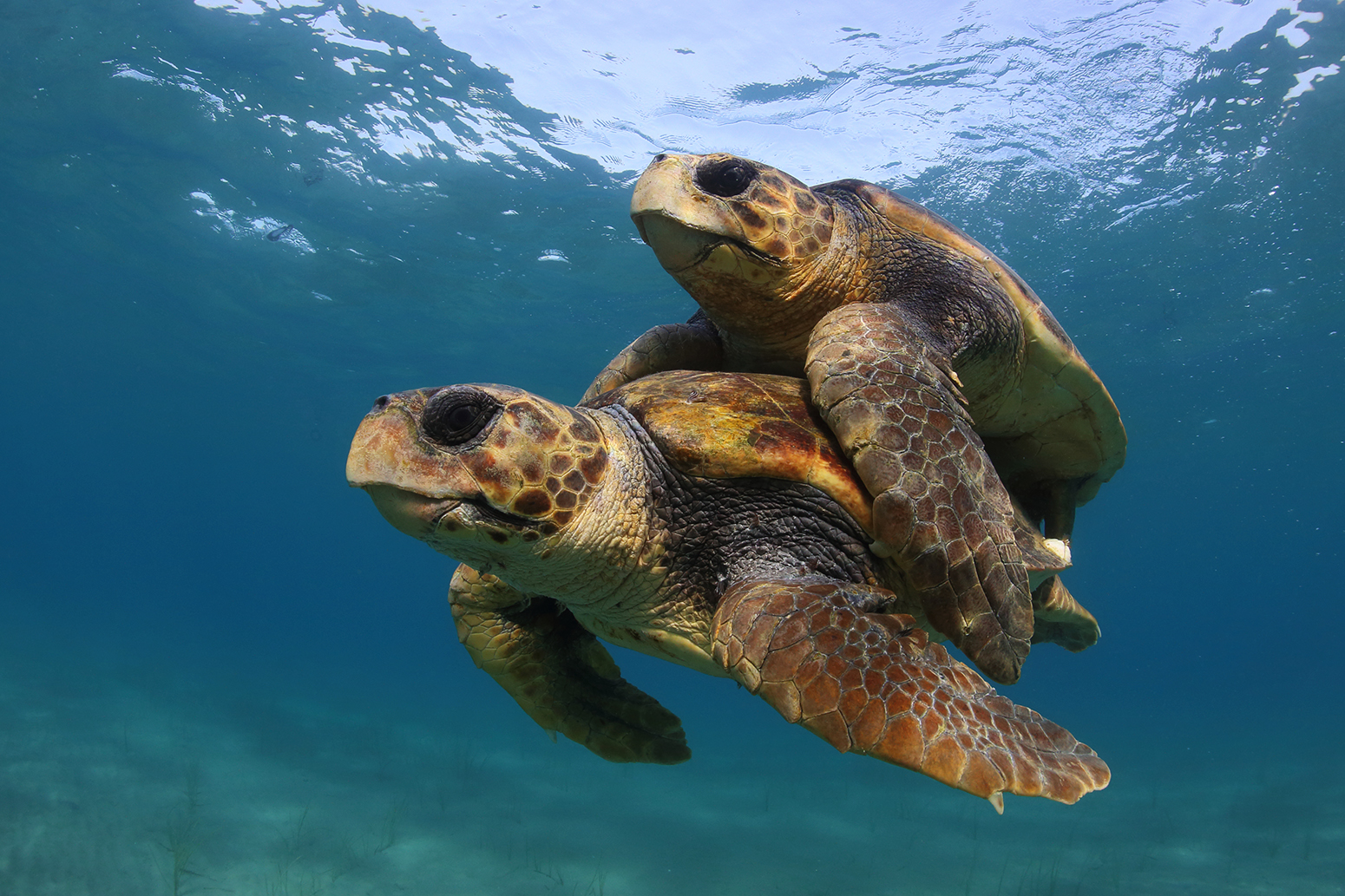
Throat fans are used to attract females and play a large role in territorial disputes with other males. For example in some turtle species the female seems to be pestered into submission.

Male turtles may also circle the female ram her shell and even bite her.
How do male turtel attract female turtel. Research shows that if a turtles eggs incubate below 8186 Fahrenheit the turtle hatchlings will be male. If the eggs incubate above 878 Fahrenheit however the hatchlings will be female. Temperatures that fluctuate between the two extremes will produce a mix of male and female baby turtles.
Researchers have also noted that the warmer the. Male and female sea turtles have cloaca waste and reproductive orifices at the base of their tails and the males cloaca houses his. If the cloaca is closer to the tip of the tail than the shell the turtle is likely male.
If the cloaca is closer to the shell than the tip of the tail the turtle is likely female. SEXING EASTERN BOX TURTLES By. Ashley LaVere Ann Somers Sex determination in turtles can be tricky because unless you see male genitalia or see a female laying eggs you cant be 100 sure about a box turtles sex.
Instead a combination of features should be used to confidently assign a sex to a turtle. Males will stick their heads out and bob their heads towards female turtles to show the intent to mate. The male may also moan or grunt in a bid to attract the females attention.
Male turtles may also circle the female ram her shell and even bite her. Water turtles will come face to face with their prospective mates. The male will flutter his clawed front legs around the face of the female and stroke the sides of her head.
In some species the female responds to indicate she is ready to mate. When it is too cold the turtles will hold their eggs inside until the weather is favorable. Before the nesting season the female turtle is courted by the male or males and mate afterwords.
From there the female will lay fertilized eggs. The female turtle can lay from 1 to 9 clutches in a season. Another key issue is habitat destruction and depredation.
Notably the placement of sea walls and jetties causes permanent habitat loss for these animals. Lighting along beaches is an obstruction to sea turtle conservation as it attracts nesting females and causes disorientation in hatchlings. Conant R and J.
Take a peek at the underside of your turtle. On most male turtles the shell is slightly concave. This is so he doesnt fall off the female during the mating process.
Female plastrons will be either flat or slightly convex. Also male turtle tails. Some mating turtles at least are more or less at right angles ie.
Female horizontal male vertical and it seems to be strenuous for the male who. They secrete a special liquid on their webs that attract males. They smell it and follow it.
Looking at the bottom of the tortoises shell you will immediately be able to tell the difference between a male and female given that on males it will be concave meaning it goes inward. This trait is also present on the box turtles and some semi aquatic water turtles. For tortoises this trait goes across the board though.
For aquatic turtles the males will circle the female and in certain species sliders cooters maps and painted turtles the. Touch is also a big part of turtle and tortoise body language. A male turtle may touch a female turtle when trying to get to know her before mating.
One of the first ways a male expresses interest and tries to get the attention of a potential mate is through fluttering which is the act of shaking his claws in her face and around her head. He may also use his neck to. In sea turtles males have proportionally enlarged prehensile tails and the tails of other kinds of turtle are also usually longer and bulkier in males than they are in females.
If the straight edge across the plastron rocks from side to side convex plastron the turtle is usually a female see below. If the straight edge shows daylight along the centre of the plastron concave plastron the turtle is usually a male see below. Males may have a concave plastron which assists them when they mount a female during mating.
Females often have a convex. Throat fans are used to attract females and play a large role in territorial disputes with other males. Turtles use visual and olfactory displays and tactile cues in courtship.
These signals occur in various combinations and are species-dependent. For example in some turtle species the female seems to be pestered into submission. Turtle doves are monogamous and mate for life.
Once the female chooses a mate the males and females work together to build nests made of vegetation. Both parents take turns incubating the eggs which hatch two to three weeks later. While most species of turtle dove are classified as least concern the European turtle dove is listed as vulnerable.
The common snapping turtle Chelydra serpentina is a species of large freshwater turtle in the family ChelydridaeIts natural range extends from southeastern Canada southwest to the edge of the Rocky Mountains as far east as Nova Scotia and FloridaThe three species of Chelydra and the larger alligator snapping turtles genus Macrochelys are the only extant chelydrids a. Females will grow larger than males in red-eared sliders and many other turtle species but the size difference between males and females varies by species. For example in sulcata tortoises the females can reach 100 pounds and the males can grow to 200 pounds or more.
In sea turtles the male and females can both grow to the same size.